#InternationalPostcardWeek
Text


In honor of International Postcard Week, we’re posting an example from special collections, the postcards of Miss Kitty Lord. Miss Kitty Lord was an English burlesque artist who toured internationally and resided in Cairo seasonally between 1908-1912. Most of the postcards were sent from admirers in Cairo, including correspondence reflecting her affair with an Egyptian architect. We wonder if this postcard with “Forget me not” written across the front was from him or another admirer.
The postcard was quite popular during the late 1800s and early 1900s. People loved them because it was quick, easy, and informal way to communicate! Think of postcards the precursor to present-day social media.
Postcard of an Arab village in the environs of Cairo
Ya‘qūb Khulūsī Bey, Egyptian architect and admirer of Miss Kitty Lord [correspondents (correspondence writers)]
Sent from Cairo to Miss Kitty Lord, Theatre des Nouveautés. E.V.
3.5 x 5.5 in
Egyptian
March 23, 1908
HOLLIS number: 8001215439
#HarvardFineArtsLibrary#Fineartslibrary#Harvard#HarvardLibrary#InternationalPostcardWeek#MissKittyLord#Postcard#Cairo
45 notes
·
View notes
Photo

have an incredibly critical role in the lives of our children. One day to celebrate them simply seems inadequate to say the least, but let's give it all we've got today. It is Share some love, support & encouragement with a teacher you know. Let them know they are appreciated. Today is also This week is and more!!!
#HealthcareFoodServiceWorkersWeek#SpinningAndWeavingWeek#HeimlichHerosWeek#CustomerServiceWeek#ChiliWeek#InternationalPostCardWeek#FirePreventionWeek#CarryATuneWeek#MysterySeriesWeek#MentalIllnessAwarenessWeek#ConsignmentDay#AppleBettyDay#RhodeIslandDay#DoSomethingNiceDay#KissAWrestlerDay#GetFunkyDay#ChildHealthDay#BeNiceDay#AmazonPrimeDay#BalloonsAroundTheWorldDay#DayOfBullyingPrevention#ArchitectureDay#CountryInnBedAndBreakfastDay#ChicSpyDay#WorldHabitatDay#wendyswisdoms#thismakesmehappy#fundays#WorldTeacherDay#Teachers
1 note
·
View note
Text

The second postcard for International Postcard Week is from Salem, Massachusetts. This house was called the “Pineapple House” because of the pineapple decoration above the doorway. The large Georgian house was built by Captain Thomas Poynton sometime between 1740 and 1750. While the house was believed to have been demolished sometime after 1923, and the door frame with pineapple pediment was donated to the Essex Institute (now the Peabody Essex Museum) and installed in the Phillips Library there. We don't know if that’s still in the case. Maybe @Peabodyessex can let us know?
Salem, Massachusetts
7 Brown Street
Publisher: Architectural Post Card Co., Philadelphia, United States
Part of Postcard Collection of the Fine Arts Library
HOLLIS number: 8001210746
#HarvardFineArtsLibrary#Fineartslibrary#Harvard#HarvardLibrary#InternationalPostcardWeek#Salem#PineappleHouse#Postcard
25 notes
·
View notes
Text

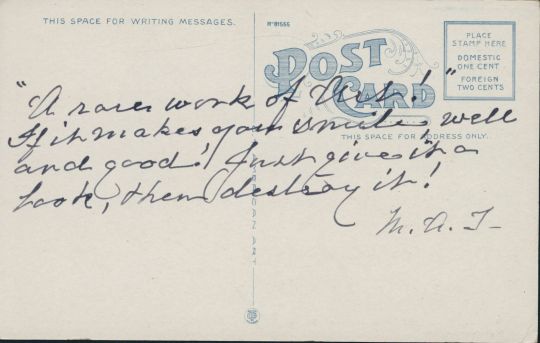
What is the International Postcard Week without a Real Cat Boat? I hope this will make you smile!
The backside of the card reads:
“A rare work of cats! If it makes you smile, well and good! Just give it a look and destroy it! – M. A. J-”
#InternationalPostcardWeek#Postcard#Postcardcollection#Cat#RealCatBoat#HarvardFineArtsLibrary#Fineartslibrary#Harvard#HarvardLibrary#harvardfineartslibrary#fineartslibrary#harvard#harvard library#harvardfineartslib#harvardlibrary
113 notes
·
View notes
Text

Celebrating International Postcard Week!
Max Fruchtermann (1852–1918) ran a publishing company that produced postcards in the Ottoman Empire. Born in 1852 in Kalucz on the eastern border of Austria-Hungary, he moved to Constantinople (Istanbul) in 1895 and started producing postcards. Fruchtermann’s business did very well when Orientalism was on trend. His early postcards were colored by hand, but by 1897 his company had started printing color postcards like this one.
Fruchtermann Postcard Series XVIII, No.71- Mevlevî dervishes (Derviches tourneurs - Constantinople)
Fruchtermann Postcard Series XVIII
Fruchtermann, Max, Austrian , 1852-1918 [printer]
Place of production: Istanbul, İstanbul, Marmara, Turkey
Ink, paper
Dimensions: 3 x 5 in.
Ottoman
Islamic
1907
HOLLIS number: 8001268984
#InternationalPostcardWeek#MaxFruchtermann#OttomanEmpirePostcards#Ottoman#FruchtermannPostcards#Postcard#Postcardcollection#HarvardFineArtsLibrary#Fineartslibrary#Harvard#HarvardLibrary#harvardfineartslibrary#fineartslibrary#harvard#harvard library#harvardfineartslib#harvardlibrary#special collections
11 notes
·
View notes
Photo


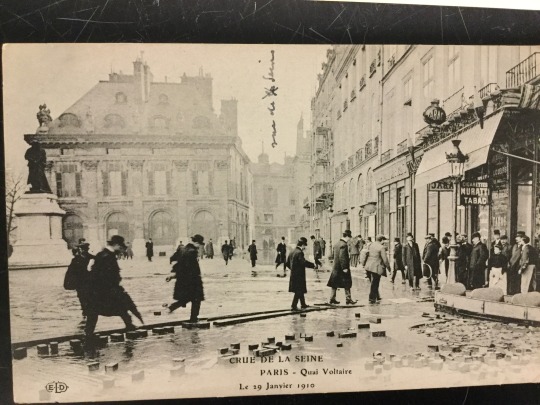
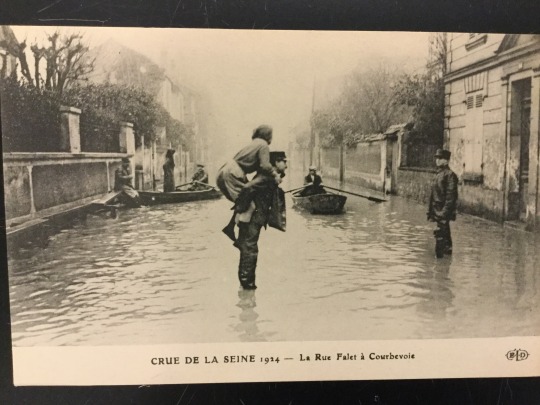
This week is International Postcard Week. Before the internet and social media, postcards played a vital role in spreading the news with pictures, including natural disasters. People wrote about their experiences to share with far-flung friends and family.
The Fine Arts Library owns approximately 167,700 postcards and viewbooks. Here are some postcards from our collections depicting floods in Paris from 1910 to 1924.
Postcard collection of the Fine Arts Library, Harvard University
<ca. 1895- , bulk 1905-1960>
<ca. 167,730 > items (postcards and viewbooks) : b&w and color ; 22 x 32 cm. or smaller, most 9 x 14 cm.
7 albums (1,068 postcards) ; 28 x 40 cm. or smaller.
Organized into 10 groups: (1) art reproductions, (2) architecture, (3) Asian art, (4) Islamic world postcards, (5) Kenneth John Conant postcard collection, (6) Arthur Kingsley Porter postcard collection, (7) Edward Jackson Holmes Jr. postcard collection, (8) Charles Rutan Strickland postcard collection, (9) postcard albums, and (10) other postcards.
HOLLIS number: 990006015830203941
Image 1: Five postcards depicting flood scenes in sepia tones.
Image 2: Crue de la Seine, 1924, La Rue Falet à Courbevoie
Description: A woman is being carried by a man in a flooded street. Water comes up below the knees of the man. In the back, two canoes carry four people.
Image 3: Crue de la Seine, Paris – Quai Voltaire, Le 29 Janvier 1910
Description: Flooded city scene where people are walking on top of bricks and long pieces of wood.
Image 4: Inondations de Paris, Janvier 1910, Avenue Montaigne
Description: People are traveling by canoes on a flooded Montaigne Avenue
#Internationalpostcardweek#postcards#vintagepostcard#flood#floodinparis#specialcollections#fineartslibrary#harvardfineartslibrary#Harvard#harvard library#harvardlibrary#Paris#Floodedstreetsinparis
41 notes
·
View notes
Photo
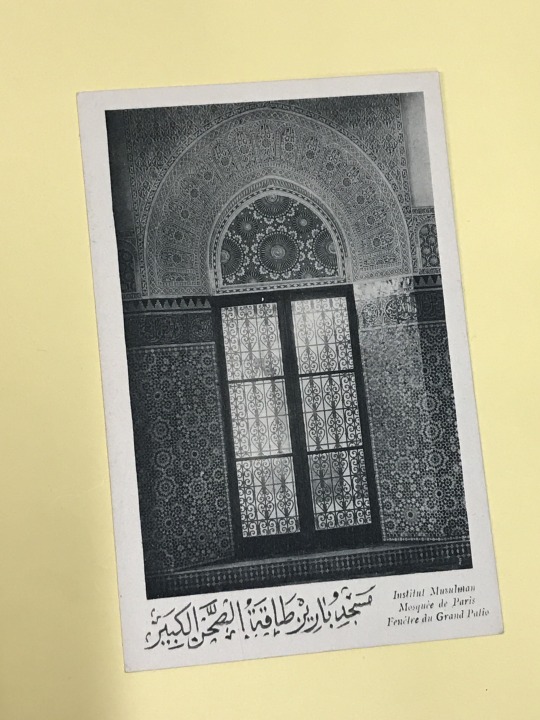

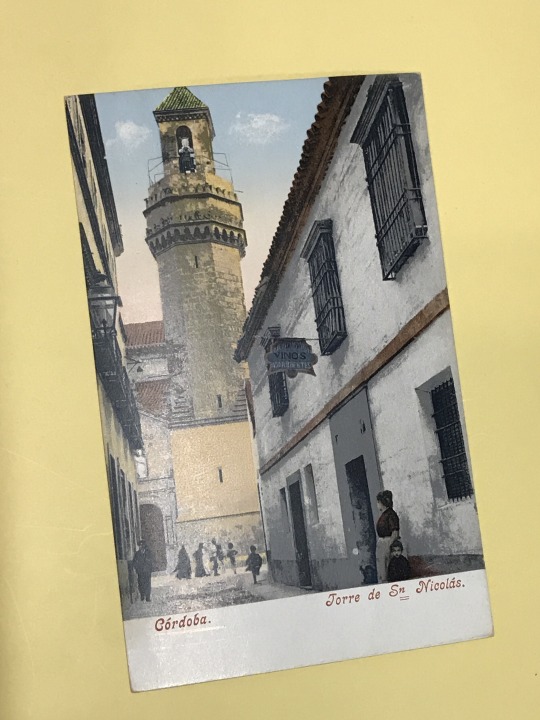

This week, instead of posting to social media, maybe send a postcard to your friends and family?
#InternationalPostcardWeek
Image 1: Black and white photo of a window from mosque in Paris
Image 2: Backside of the postcard with handwritten notes
Image 3: Hand-colored image of the Torre de Nicolas from Córdoba, Spain
Image 4: Black and white photo of a fortified complex from Alcazaba, Almería with handwritten notes at the bottom
Postcard collection of the Fine Arts Library, Harvard University
#Internationalpostcardweek#postcard#postcards#vintagepostcard#special collections#fineartslibrary#harvardfineartslibrary#Harvard#harvard library#harvardlibrary
12 notes
·
View notes
Photo

Before the smart phone, there was a Kodak.
Happy International Postcard Week!
Take a Kodak with you. The Kodak Girl [advertising postcard]
English school, 20th century, England [artist]
Eastman Kodak Company [advertiser (manufacturer)]
Materials/Techniques: chromolithography
English
ca.1910
HOLLIS number: olvwork555145
Harvard Fine Arts Library, Digital Images & Slides Collection d2011.05012
#postcard#internationalpostcardweek#kodak#kodakgirl#kodakcamera#fineartslibrary#harvardfineartslibrary#harvardfineartslib#Harvard#harvard library
160 notes
·
View notes
Photo
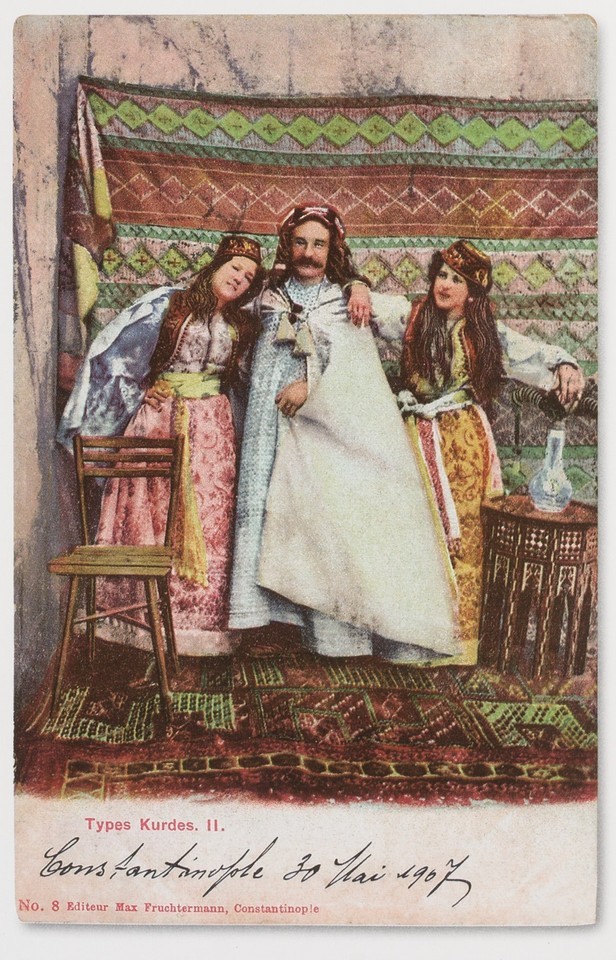

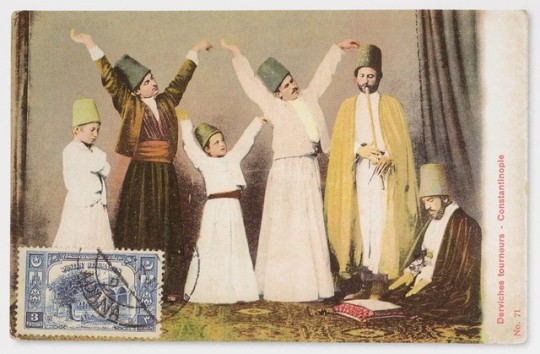
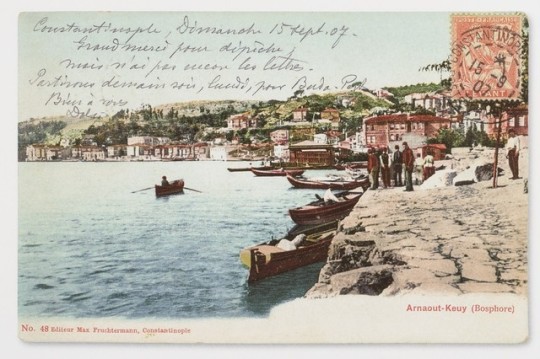
Max Fruchtermann (1852–1918) was a publisher for the Ottoman Empire postcards. Fruchtermann was born in 1852 in Kalucz, a town on the eastern border of Austria-Hungary, and moved to Constantinople (Istanbul) in 1867 and opened a picture framing shop in the city. He started producing his Ottoman postcards in 1895, and did very well when Orientalism was popular. His early postcards were hand-colored, but in 1897 his company started producing color postcards.
Fine Arts Library’s Digital Images and Slide Collection has 95 images of Fruchtermann’s postcards digitized. Explore all these images from Fruchtermann Postcard Series XVIII. Here are some samples in celebrating International Postcard Week.
Fruchtermann Postcard Series XVIII
Fruchtermann, Max, Austrian , 1852-1918 [printer]
Place of production: Istanbul, İstanbul, Marmara, Turkey
Dimensions: 3 x 5 in.
Ottoman
Islamic
postcards
1907
HOLLIS number: 8001268984
Image 1: No. 8: Kurdish gentleman (Types Kurdes. II)
Image 2: No. 89: Turkish woman in traditional dress
Image 3: No. 71: Mevlevî dervishes (Derviches tourneurs - Constantinople)
Image 4: No. 48: Arnavutköy
#postcard#internationalpostcardweek#ottoman#fruchtermannpostcard#fineartslibrary#harvardfineartslibrary#harvardfineartslib#Harvard#harvard library#library
16 notes
·
View notes
Photo

Happy International Postcard Week!
Our postcard collections include postcards and viewbooks collected for the study of Islamic art and architecture.
Here’s an interesting Ottoman postcard from 1908 depicting traitors in the guise of animals, such as scorpion and serpents. It’s interesting see these historical caricatures and compare them to what we see in our time period. Before the advent of TVs and social media, people sent postcards to friends and family, often describing their travels and commenting on world events.
Postcard - Allegorical Caricature Representing Traitors in the Guise of Animals, Scorpion and Serpents
Place of production: Istanbul
Materials/Techniques: zincography, cardboard
Ottoman
Polish
1908
Repository: Muzeum Narodowe w Warszawie SKAZvr 539/2
HOLLIS number: 8001012807
Harvard Fine Arts Library, Digital Images & Slides Collection d2016.05195
#postcard#postcards#internationalpostcardweek#traitors#caricature#ottoman#fineartslibrary#harvardfineartslibrary#harvardfineartslib#library#harvard library#Harvard#postcardcollection
8 notes
·
View notes
Video
The Cascade Mountains - Arrived here this morning at four only twenty-three hours late. #InternationalPostcardWeek #art #stories #twentiethcentury #postcard #jackwhyte #enjoyingpostcards http://www.facebook.com/groups/485424754988661 #podcast #podcasting #cascade #mountains #Washington (at Cascade Mountains)
#internationalpostcardweek#art#podcasting#mountains#postcard#washington#jackwhyte#enjoyingpostcards#cascade#stories#twentiethcentury#podcast
0 notes